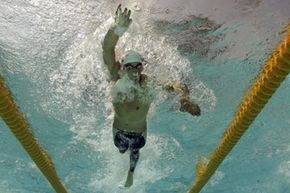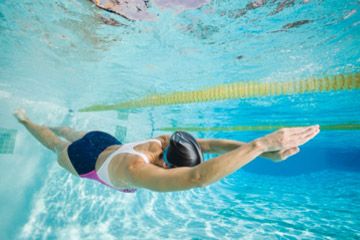"Swimming is the only sport I can think of during which there are moments you are unable to breathe even if you want to," open-water swimming champ Alex Kostich once said, referring to the fact that you can really only inhale when your face isn't submerged. Naturally, this makes achieving proper breathing technique a top priority. But that's no small task. Many swimmers get their motion and body position in the water just right, but adding breathing to it can disrupt their rhythm.
The freestyle stroke, or front crawl, in which you keep your head down in the water and alternately reach forward with your arms while propelling your body forward with small flutter kicks, is the most common stroke in swimming -- the one you're typically taught after learning to dog paddle and float. But failing to master the proper breathing can affect your stamina, speed and ability to see where you're going. It can also result in tense, cramped muscles and even injury, so it's vital you learn good technique.
Advertisement
We'll get into the specifics of proper breathing in the following section, but to get started, let's take a look at the basics of the freestyle stroke:
- Start with your body parallel to the bottom of the pool, and try to stay as high in the water as possible throughout your stroke.
- With toes pointed, kick your feet up and down, keeping your legs straight but loose.
- Alternate rotating your arms in a windmill motion, so that when one arm is extended forward, the other is back by your side.
- As you pull your extended arm back in the water, curve your hand toward your stomach, and then aim it out by your hip as it exits the water.
- On every third stroke, take a breath by turning -- not lifting -- your head to the same side as the arm that's coming up out of the water.
Sounds easy enough, right? Actually, doing it right takes a little finesse. Read on to find out the most common mistakes swimmers make with their breathing and tips for how to fix them.
Advertisement


